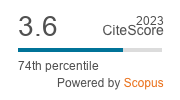Article | Open Access
Inclusion and Exclusion in Urban Public Space: Contemporary Challenges in Vienna and Helsinki
| Views: | 1465 | | | Downloads: | 1650 |
Abstract: Public spaces facilitate interactions among people from diverse backgrounds and serve as arenas that offer valuable insights into societal dynamics. They have the potential to promote inclusion, yet they can also foster exclusionary practices. Focusing on the years 2022 and 2023, and the cases of Vienna and Helsinki, this article examines how different actors, from the city administration to local stakeholders and young people, perceive and negotiate inclusion and exclusion in public space. Through a multi-method analysis, including background research, expert interviews, and focus groups, we identified four key challenges that define the negotiation of inclusion and exclusion in public space and outline the perspectives, tensions, and policy measures connected to them. Our empirical material underscores how public space is a critical resource that is essential for fostering sustainable and resilient urban futures. Local governments need to be aware of the overlapping and contradictory effects of policies on various groups, and balance between universalistic and particularistic policy measures to address vulnerabilities and diverse community needs effectively. Taking a proactive perspective helps to address future crises while identifying ways of involving the perspectives of diverse stakeholders in such processes.
Keywords: exclusion; inclusion; public space; urban policies; youth
Published:
Supplementary Files:
© Miriam Haselbacher, Kanerva Kuokkanen, Emilia Palonen, Ursula Reeger. This is an open access article distributed under the terms of the Creative Commons Attribution 4.0 license (http://creativecommons.org/licenses/by/4.0), which permits any use, distribution, and reproduction of the work without further permission provided the original author(s) and source are credited.




